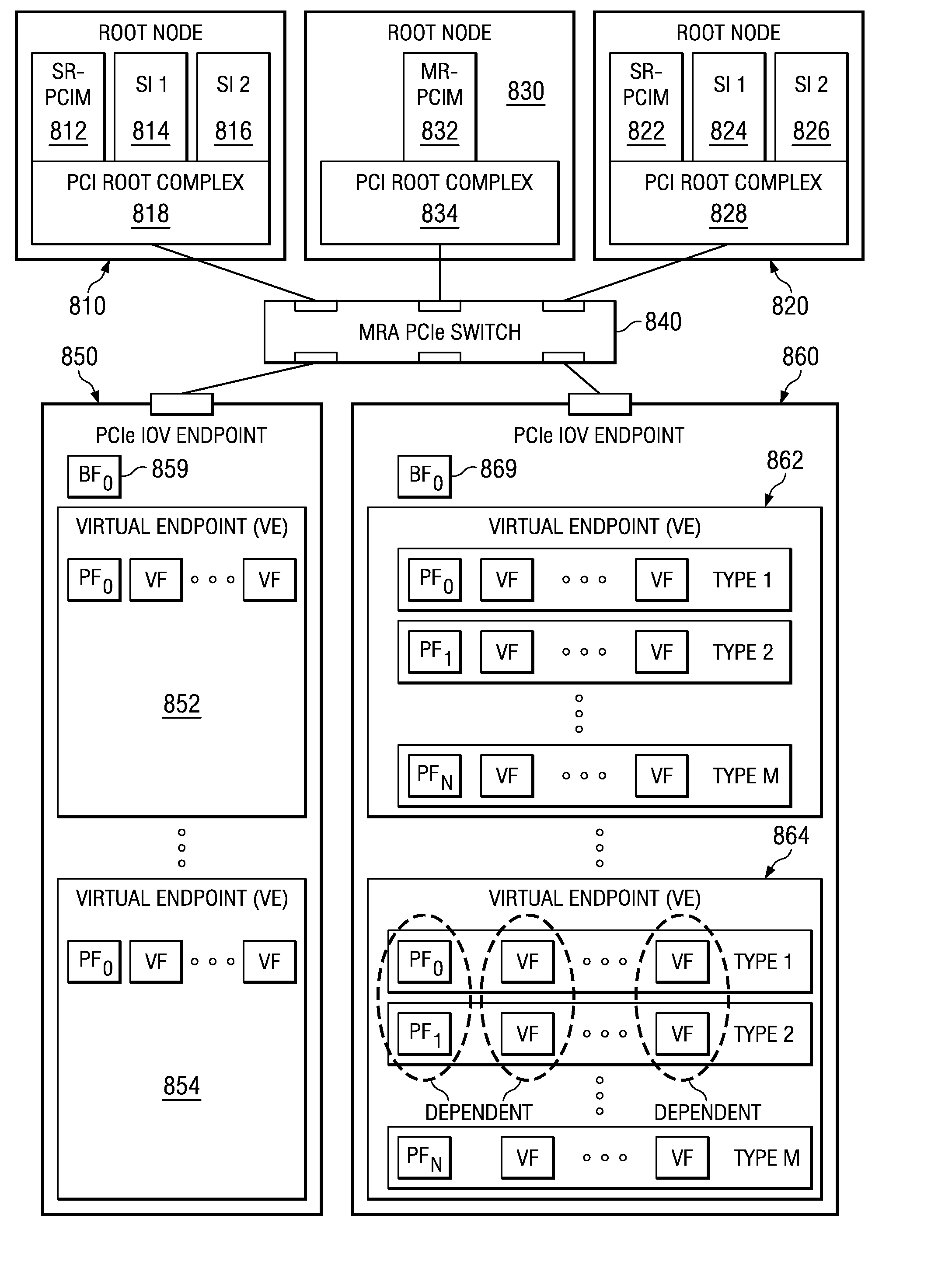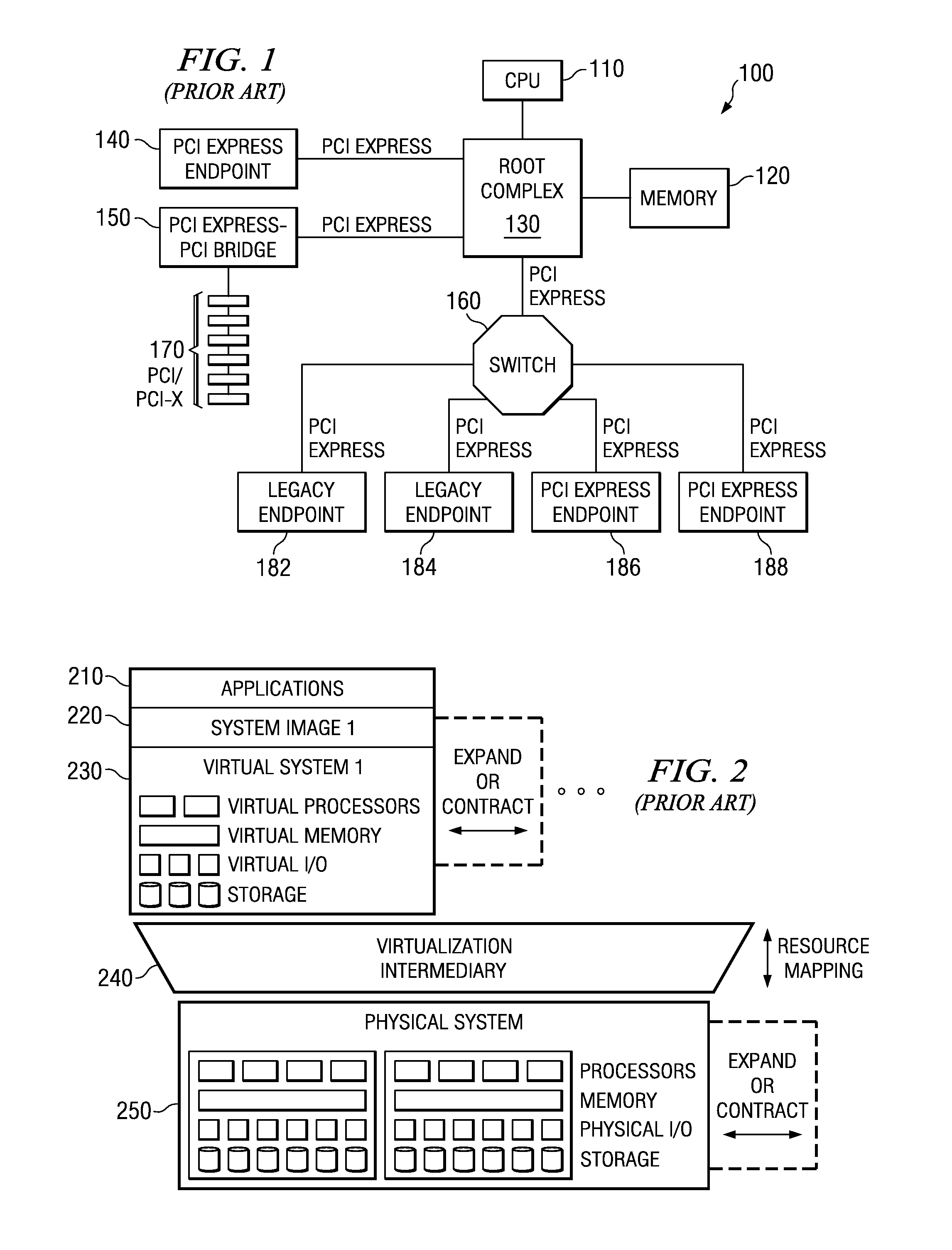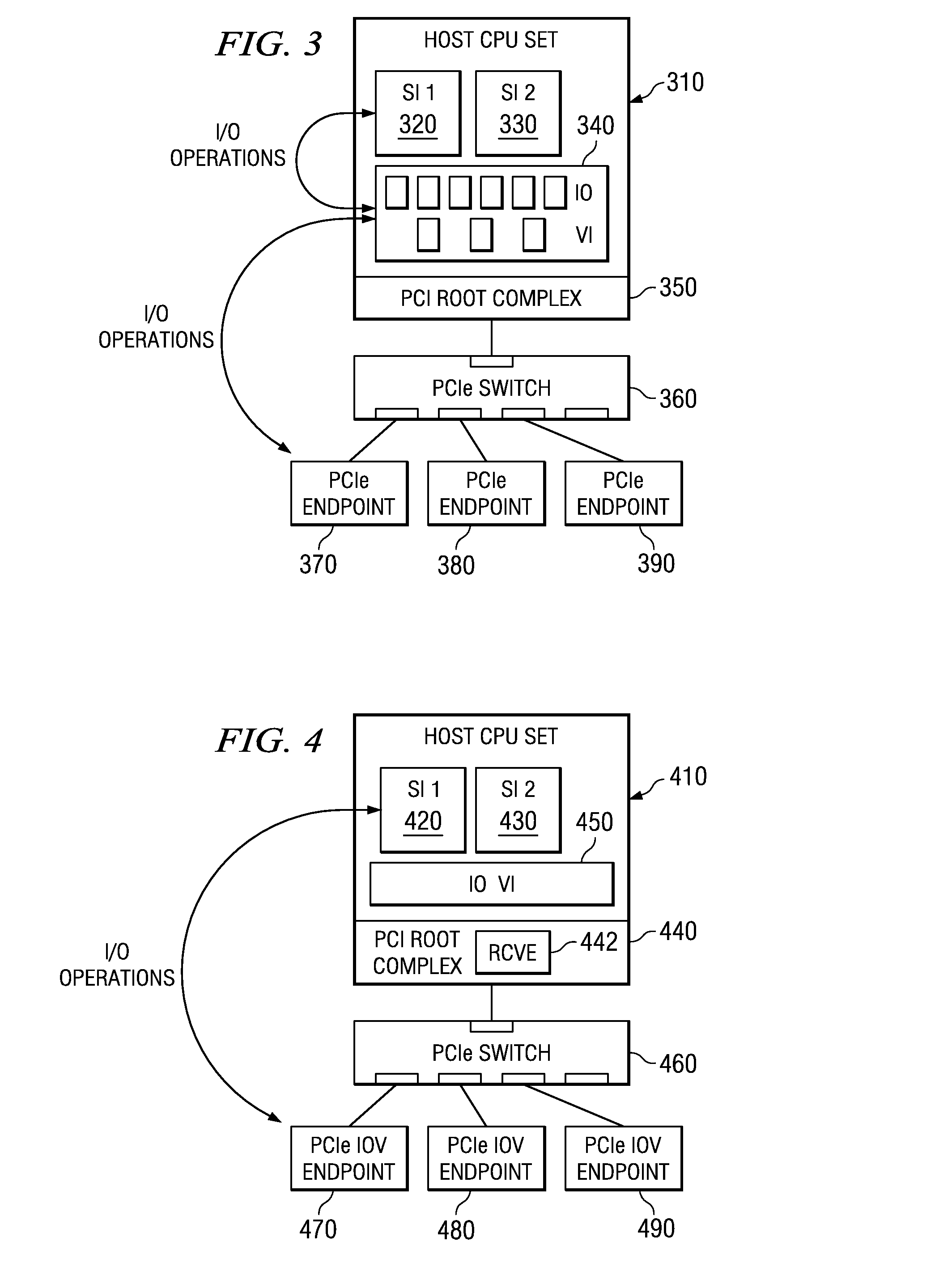System and method for hot-plug/remove of a new component in a running pcie fabric
- Summary
- Abstract
- Description
- Claims
- Application Information
AI Technical Summary
Benefits of technology
Problems solved by technology
Method used
Image
Examples
Embodiment Construction
[0062]The illustrative embodiments provide a mechanism that allows a PCIe adaptor, or “endpoint,” to be natively shared by two or more system images (SIs) of the same or different root complexes, which may be on the same or different root nodes, e.g., blades of a blade server. Further, the illustrative embodiments provide a mechanism by which communication is facilitated between the system images and natively shared endpoints. In addition, the illustrative embodiments provide mechanisms for migrating virtual functions between virtual planes, root complexes, and system images to facilitate management of the PCIe fabric. Moreover, the illustrative embodiments provide a mechanism by which a root complex's single root PCI manager (SR-PCIM) is able to read, from an endpoint, the valid combinations of functions that the endpoint implementer allowed when designing the endpoint. The SR-PCIM may then set the combinations of functions that will be used in the current configuration in which th...
PUM
 Login to View More
Login to View More Abstract
Description
Claims
Application Information
 Login to View More
Login to View More - R&D Engineer
- R&D Manager
- IP Professional
- Industry Leading Data Capabilities
- Powerful AI technology
- Patent DNA Extraction
Browse by: Latest US Patents, China's latest patents, Technical Efficacy Thesaurus, Application Domain, Technology Topic, Popular Technical Reports.
© 2024 PatSnap. All rights reserved.Legal|Privacy policy|Modern Slavery Act Transparency Statement|Sitemap|About US| Contact US: help@patsnap.com










